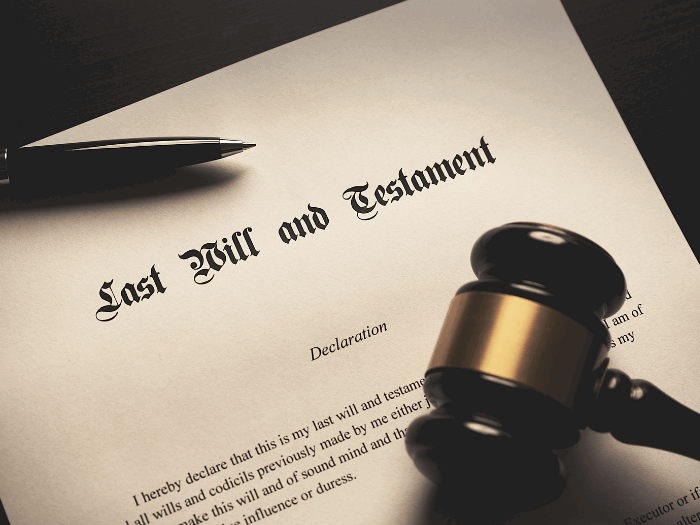It’s one of the most common questions clients ask when completing their estate plan –
‘What actually happens to kick off this process when I die?’.
For all the time spent drafting wills and building tax-efficient structures, few people understand what really happens next. Estate administration, collecting, managing and distributing a deceased person’s assets, is part law, part logistics, and part people management. With a little foresight, though, it can run far more smoothly.
Strong foundations start before death
Good estate administration begins with organisation.
When someone passes away, the first practical step most families take is to contact the person’s superannuation fund or life insurance provider. These organisations often guide beneficiaries through the early administrative requirements, from claim forms to identity verification. Where a financial adviser is linked to the account, the provider may refer the family to them for support.
This early connection can make a difficult process easier, as the adviser can help coordinate information, liaise with insurers and trustees, and ensure nothing important is overlooked.
If you’ve engaged a full-service financial advice or legal firm, they may also hold your original estate planning documents (such as wills, enduring powers of attorney, and related instructions). Having these safely stored, and knowing exactly where they are, can prevent costly delays.
| Tip: Keep the following in one clearly labelled file or secure digital vault, and make sure your executor(s) know where it’s stored: – Your original (or a copy of your) will and enduring powers of attorney – Superannuation and insurance policy details – Passwords or online access instructions – Contact details for your adviser, solicitor, and accountant |
After the death certificate is issued, the Australian Death Notification Service (ADNS) allows multiple organisations to be notified at once. It is a simple but valuable tool that saves families from repeating the same painful task across different institutions.
Communicate before it’s too late
Experience and legal practice consistently show that clear communication before death reduces disputes after death. Executors, beneficiaries and guardians should all know their roles and the reasons behind key decisions.
Families sometimes assume ‘the will speaks for itself’, but misunderstandings about intent can spark unnecessary conflict.
| Tip: Hold a short family meeting, ideally with your adviser or solicitor present, to explain how your estate plan works and where documents are stored. Transparency today prevents confusion tomorrow. |
The death certificate and funeral costs
In Australia, the funeral director usually registers the death and applies for the death certificate on the family’s behalf. Executors should check for any funeral insurance or prepaid plan to cover immediate costs.
Most banks will release funds directly to the funeral director or reimburse whoever paid, once they receive the invoice and proof of identity. Policies vary between institutions, but this often helps families manage cash flow before probate.
Probate: authority to act
Probate is the Supreme Court’s confirmation that a will is valid and that the named executor has the authority to administer the estate. The application process and timeframes vary slightly by state and territory, but generally you should allow six to eight weeks for a straightforward probate once lodged.
Many people try to avoid probate, but it’s often unavoidable. For example, aged-care providers won’t refund a Refundable Accommodation Deposit (RAD) until probate or letters of administration are granted. Once that occurs, the refund must be paid promptly, with statutory interest rules applying.
Allow roughly six to eight weeks for a straightforward probate after filing. Backlogs or requisitions can extend this, so start early.
| Tip: Begin preparing probate documents as soon as the death certificate is available. Even if not every asset requires it, early preparation avoids delays. |
When probate isn’t needed
Probate may not be required if:
- Assets are held jointly (passing automatically to the surviving owner)
- Superannuation has a valid binding death benefit nomination
- Banks agree to release small balances without probate
Thresholds for bank accounts and asset releases vary by institution and may require indemnities.
Superannuation generally doesn’t form part of the estate. With a valid nomination, the trustee pays benefits to dependants or to the legal personal representative, depending on the fund’s deed.
Debts, taxes and the estate return
Before any distributions, the executor must settle debts, funeral costs and taxes. Usually, two tax returns are needed:
- The deceased’s final individual ‘date-of-death’ return, and
- A deceased estate trust return for income earned after death (rent, dividends, etc.).
The Australian Taxation Office allows concessional estate tax rates for the first three income years, easing the burden on smaller estates.
Distributing assets – with tax in mind
Executors often face a key question – ‘should the estate sell assets or transfer them in-specie to beneficiaries?’.
Under Division 128 of the Income Tax Assessment Act 1977, death itself doesn’t trigger capital gains tax. Instead, the cost base transfers to the executor or beneficiary, and gains or losses arise when the asset is later sold.
In one case, a client planned to sell shares within the estate at a loss. The problem? That loss would have been trapped in the estate, unable to offset future gains. Instead, we transferred the shares in-specie to beneficiaries, who sold them personally and carried forward their capital losses for future use. A simple choice saved thousands in future tax.
| Tip: Always seek advice before selling or transferring assets. The right decision depends on the beneficiaries’ circumstances and the type of asset. |
Final distribution and closing the estate
Once debts and taxes are cleared, the executor can distribute assets according to the will. A clear statement of distribution, showing what each beneficiary receives and how values were calculated, demonstrates transparency and reduces disputes.
After final distribution, the estate can be formally closed, though testamentary trusts or ongoing investments may continue under separate management.
Final thoughts
Estate administration isn’t just a legal process; it’s the final act of stewardship. Executors often juggle grief, paperwork and responsibility at once.
For many families, the process runs far more smoothly when their financial adviser is already connected to their superannuation, insurance, and estate documents. That familiarity allows us to guide, coordinate, and support loved ones from the very first step.
| Tip: Think of your estate plan as a roadmap for those you love. The clearer it is, the fewer wrong turns they’ll take when the time comes. |
Meet Luke at KDM Financial and Estate Planning or Find a Planner near you!
The Money & Life website is operated by the Financial Advice Association (FAAA). The views expressed in this article are those of the author and not those of the FAAA. The FAAA does not endorse or otherwise assume responsibility for any financial product advice which may be contained in the article. Nor does it endorse or assume responsibility for the information.








